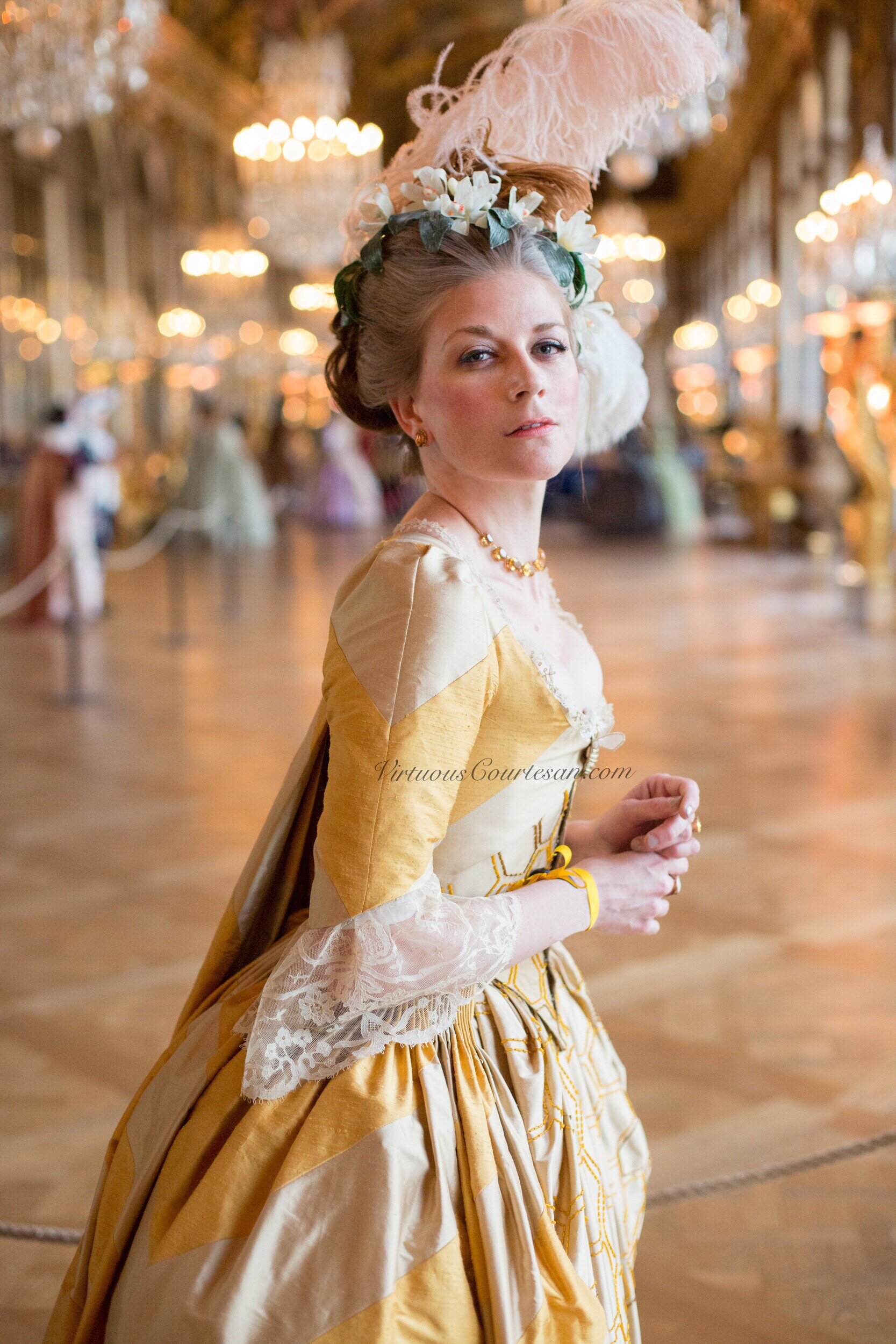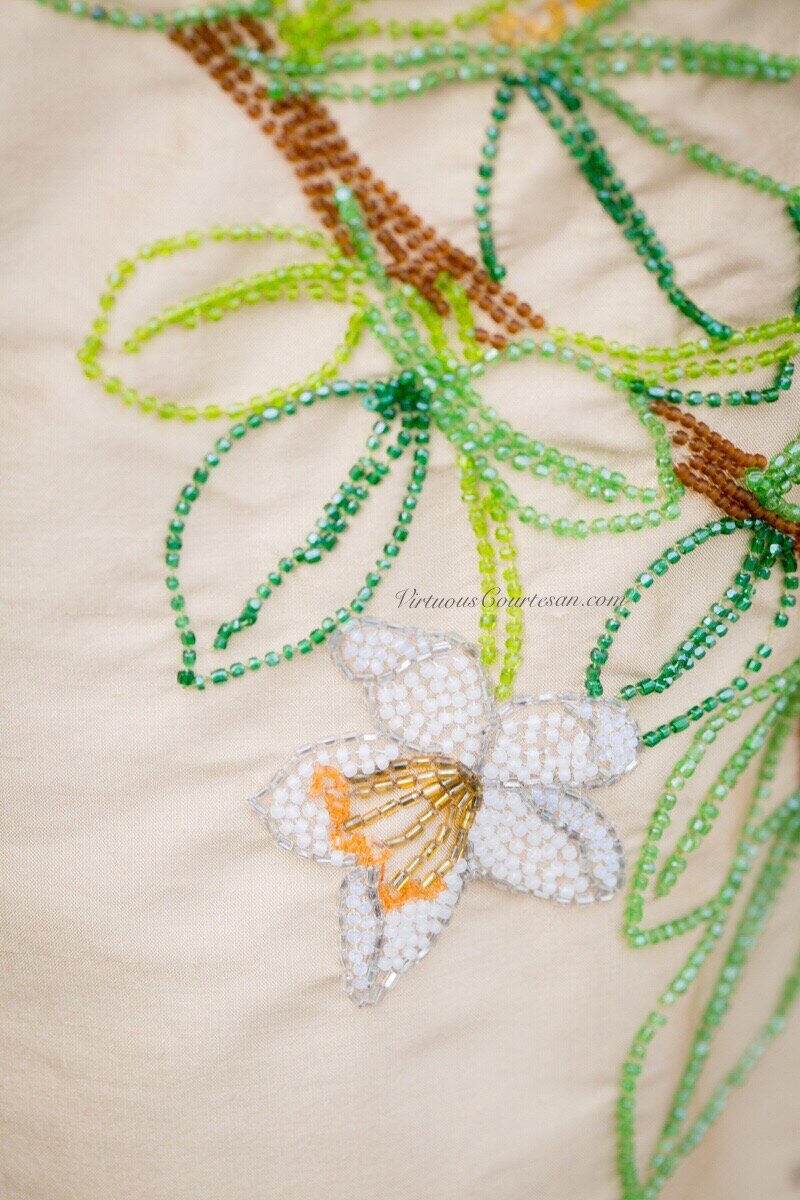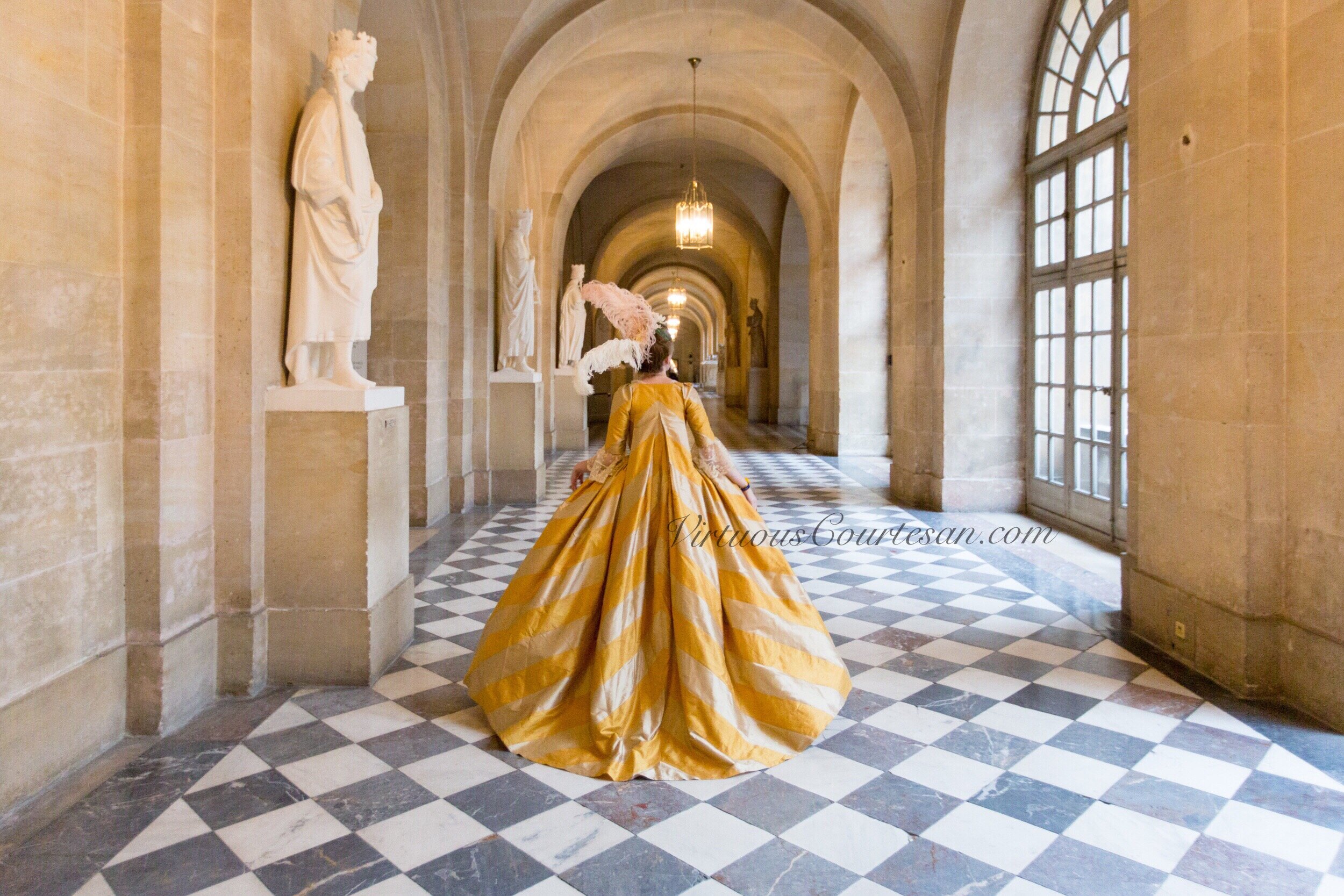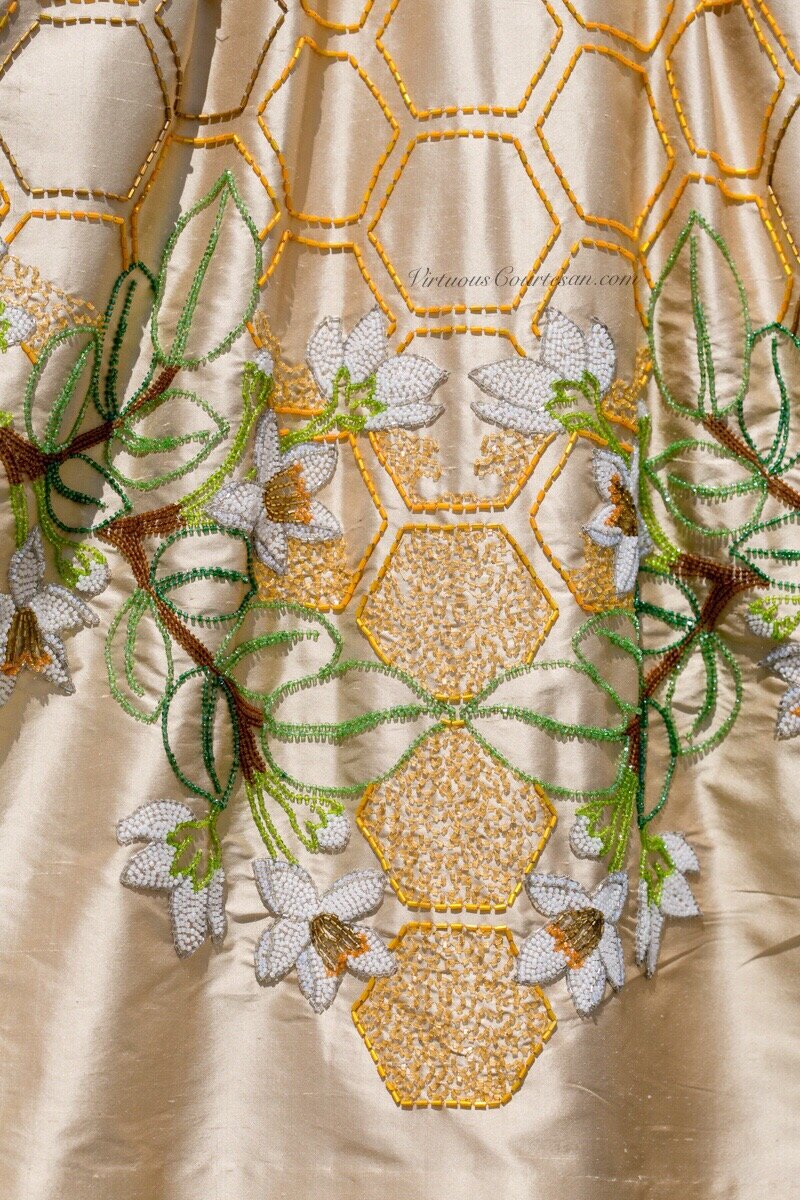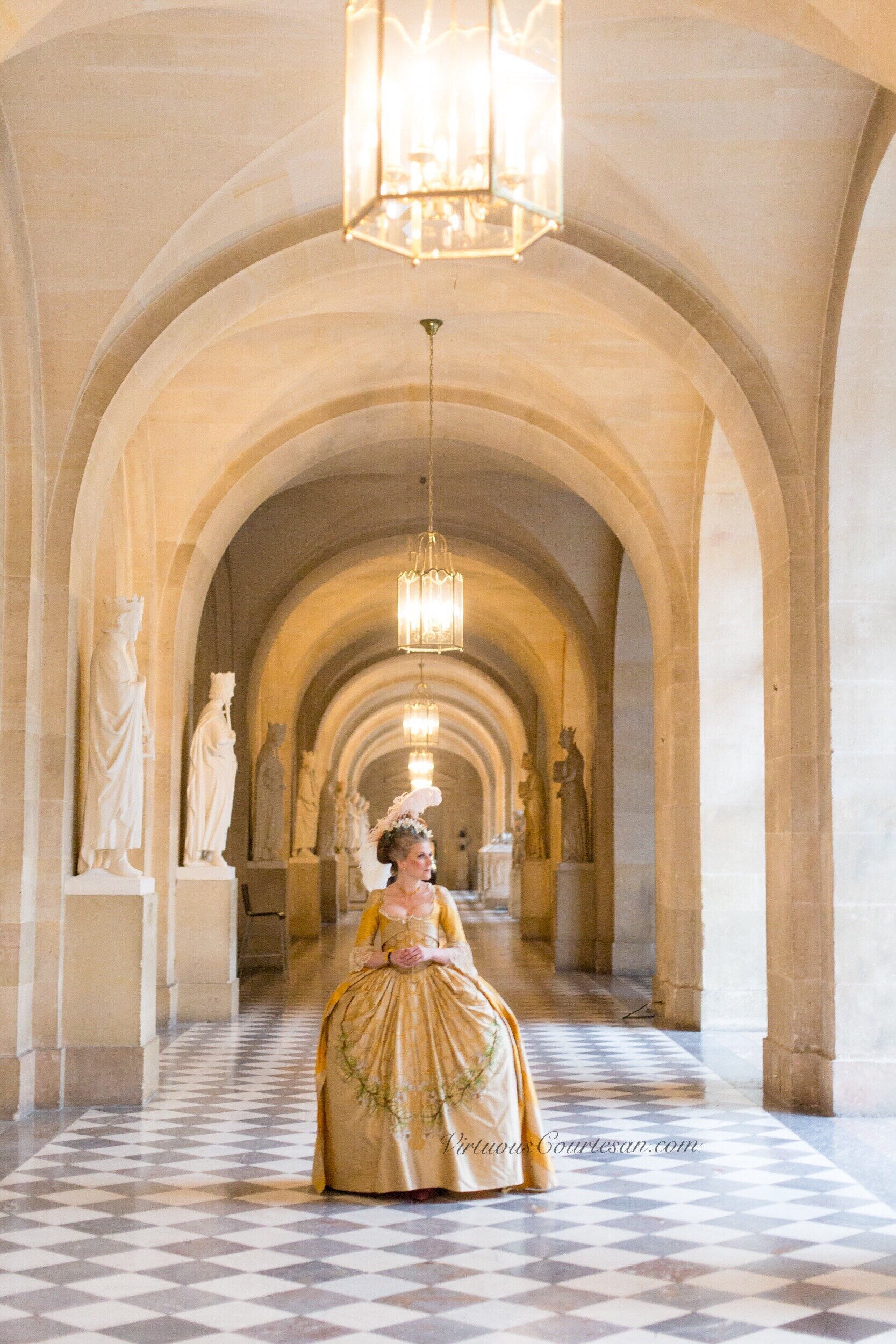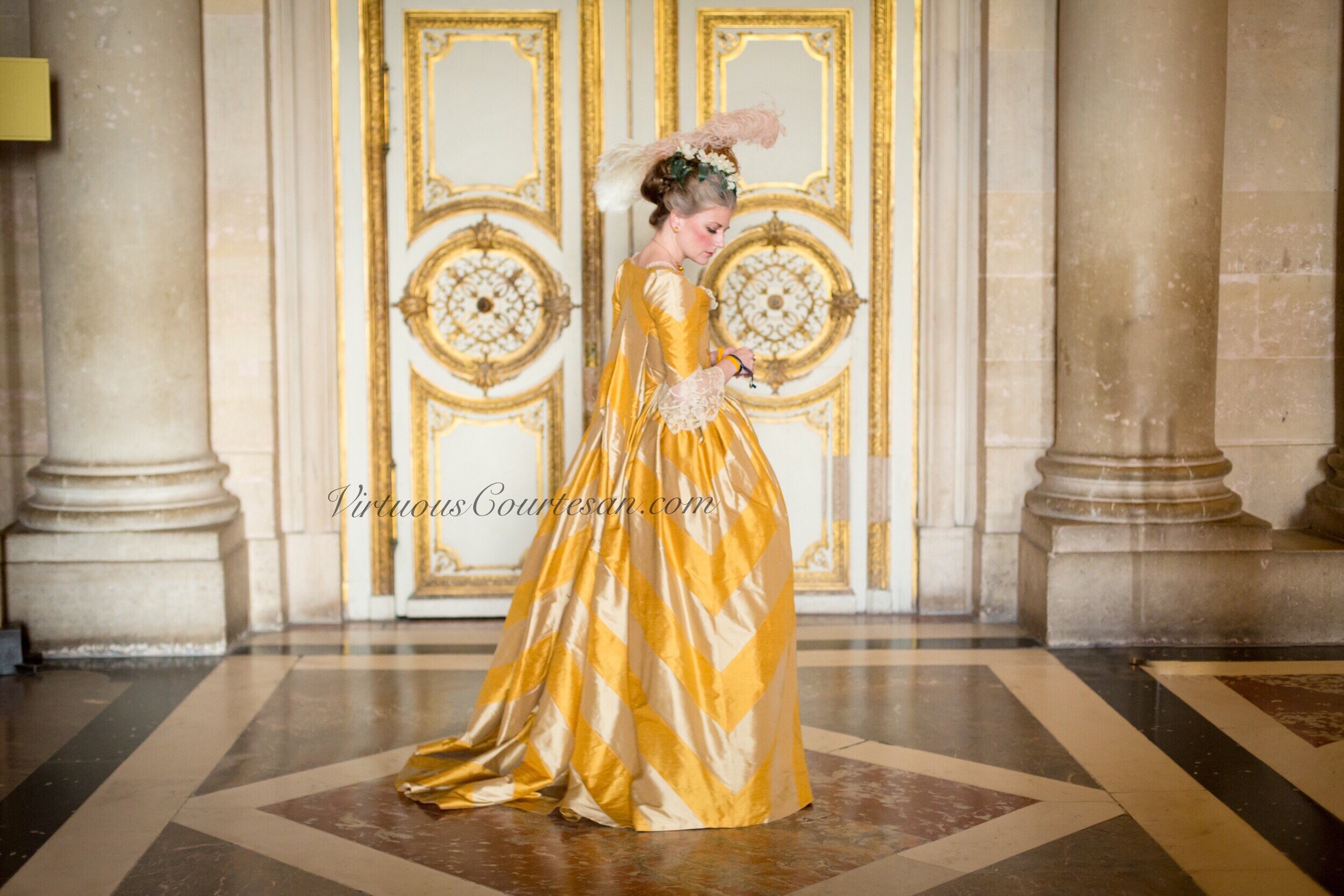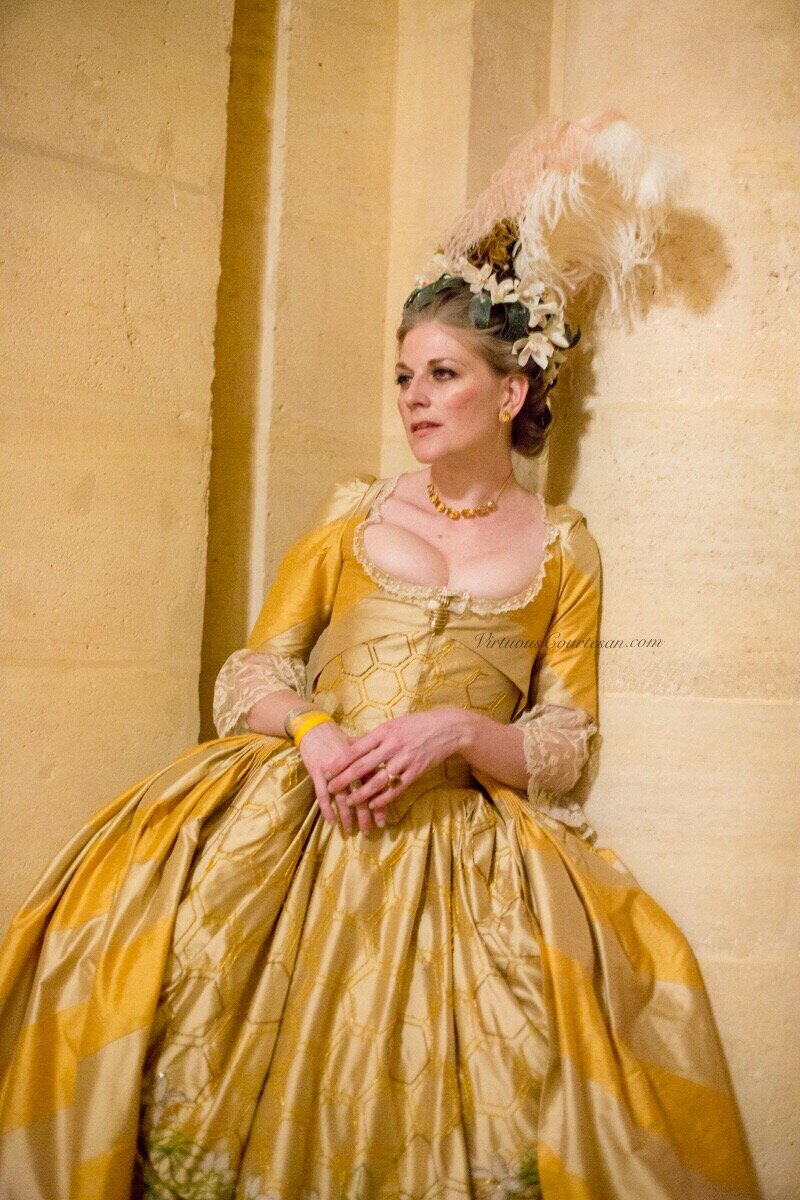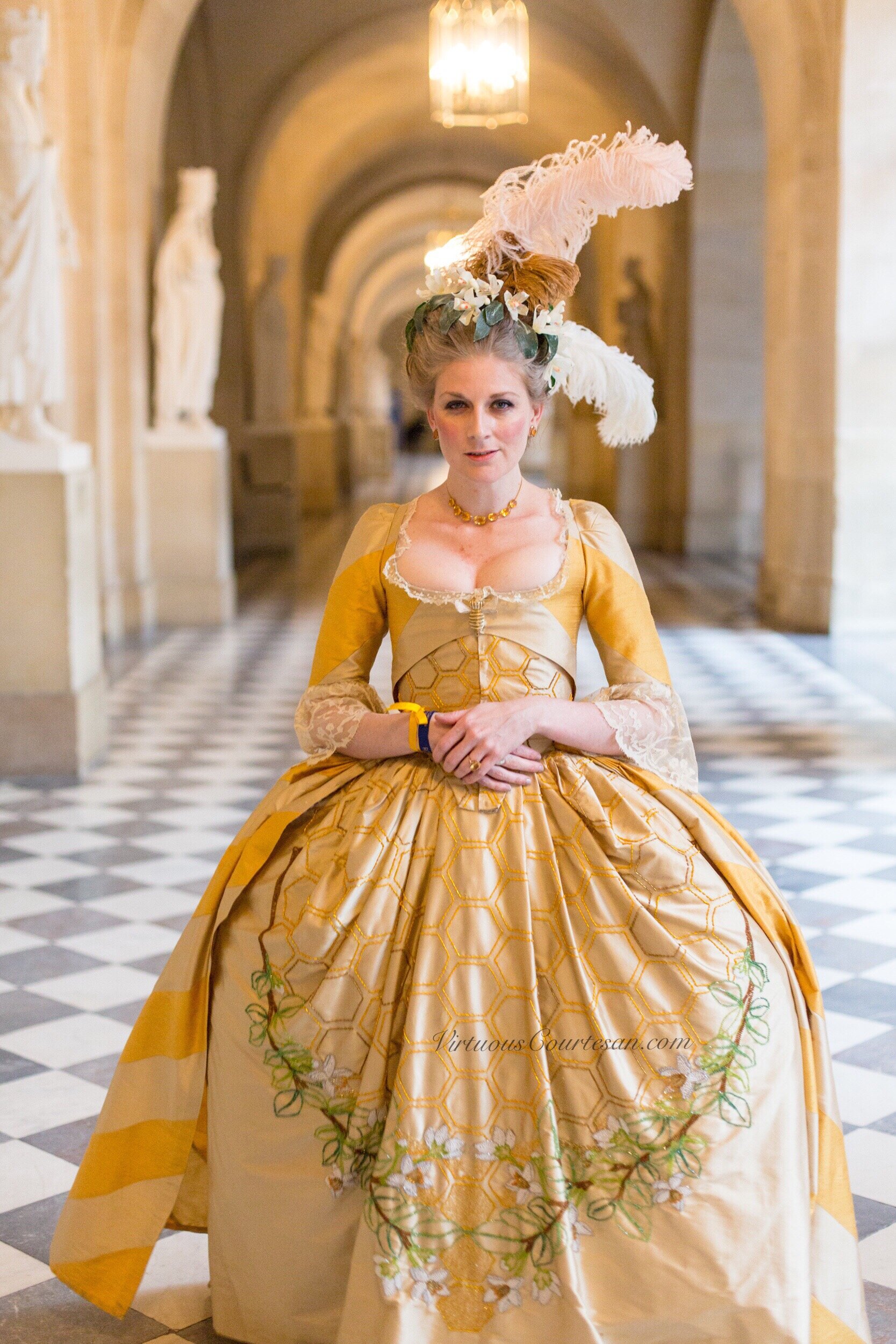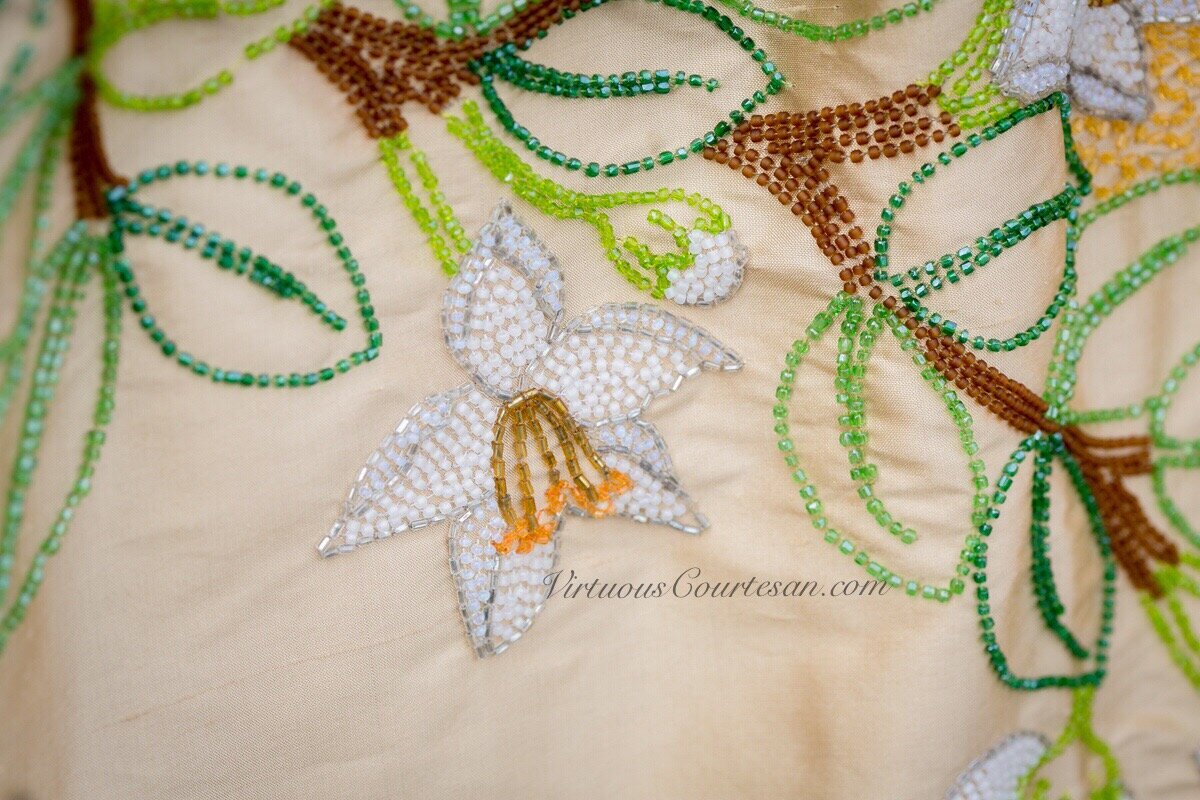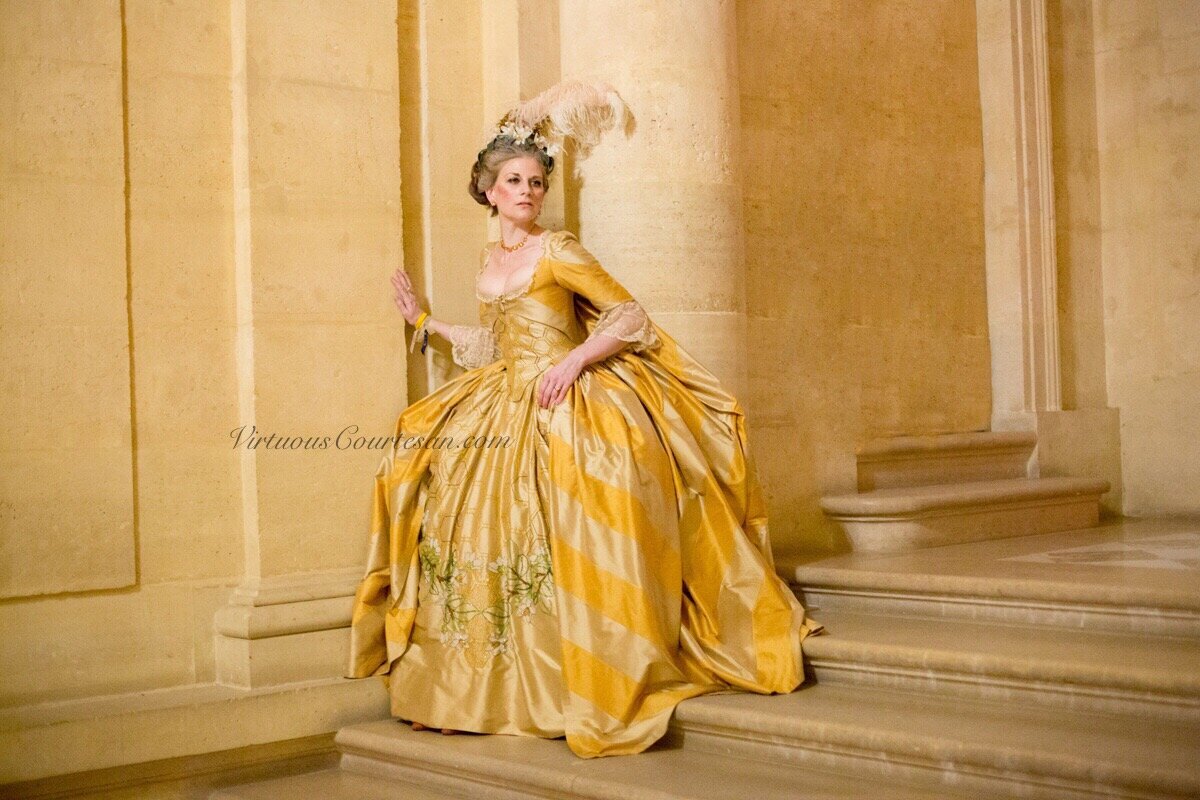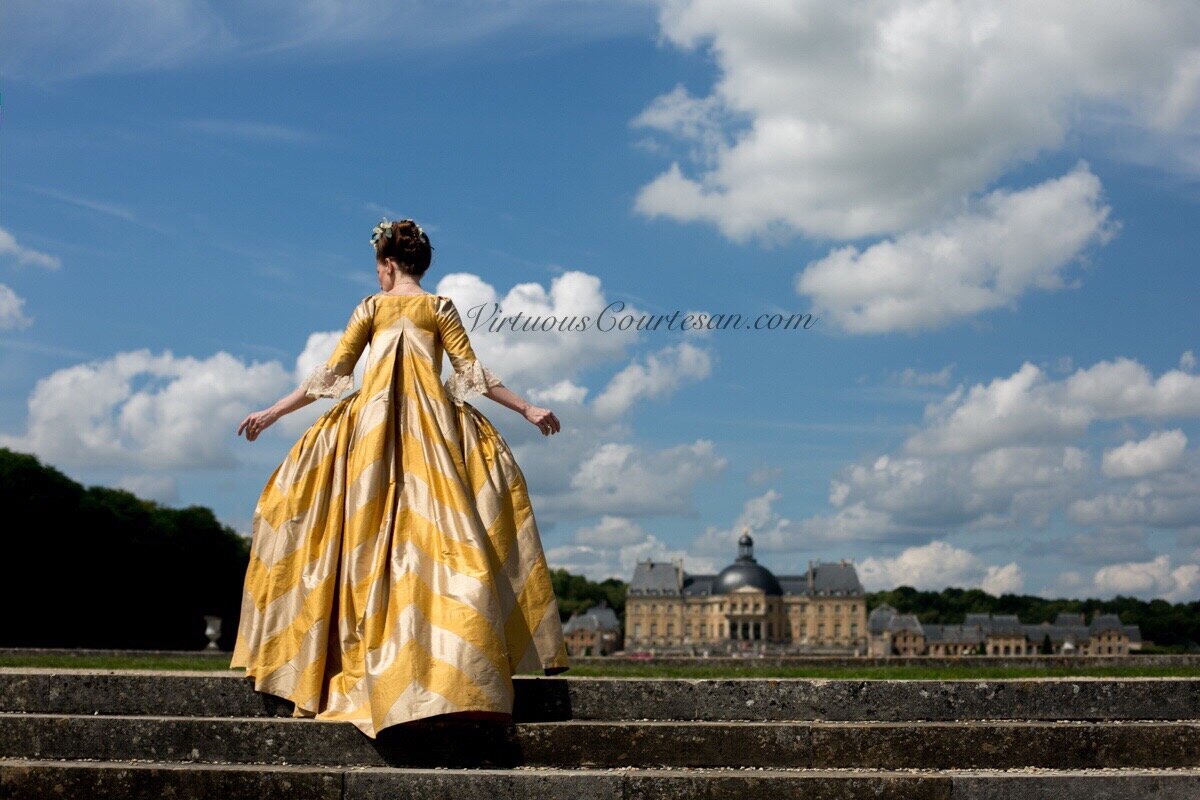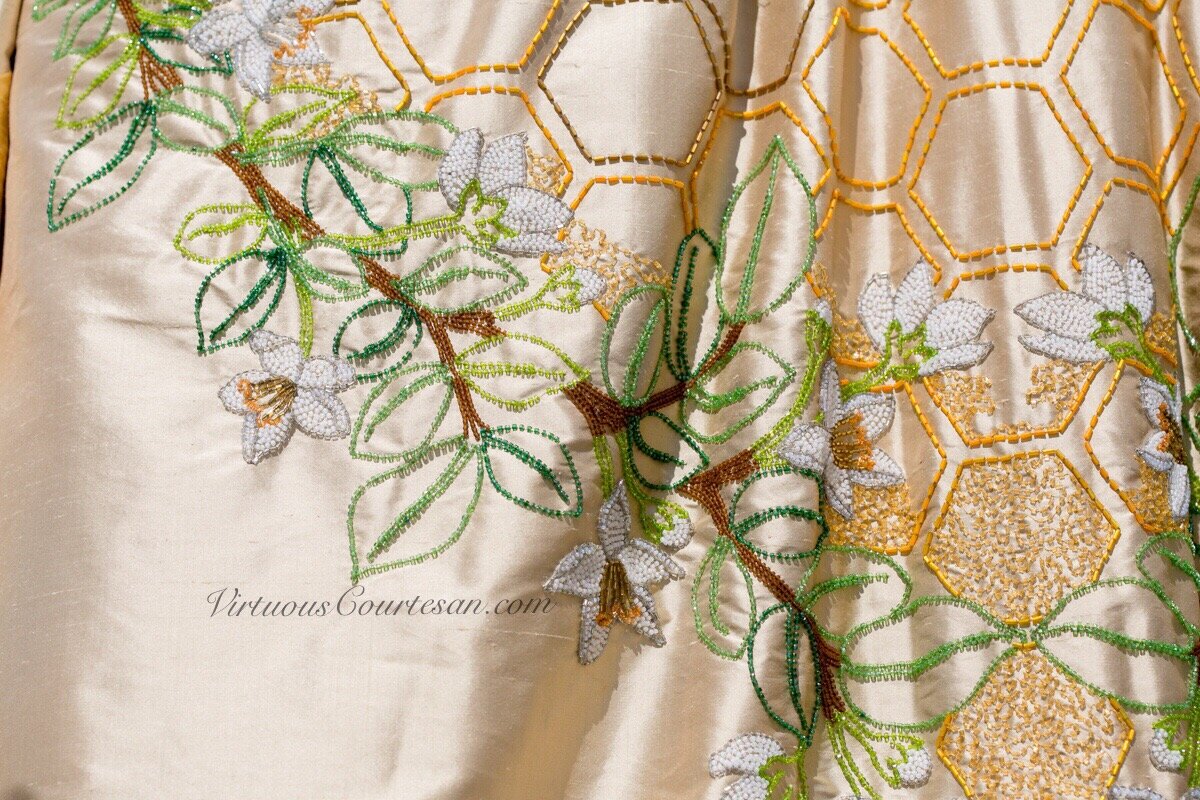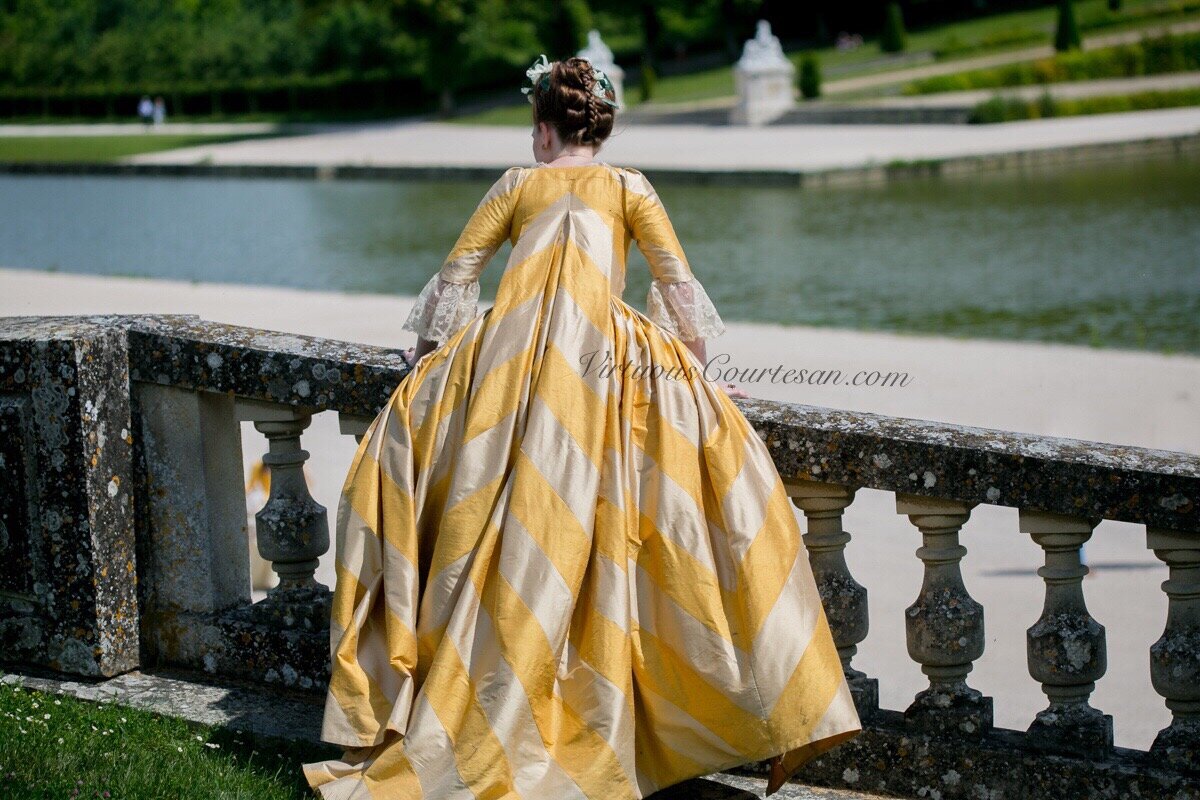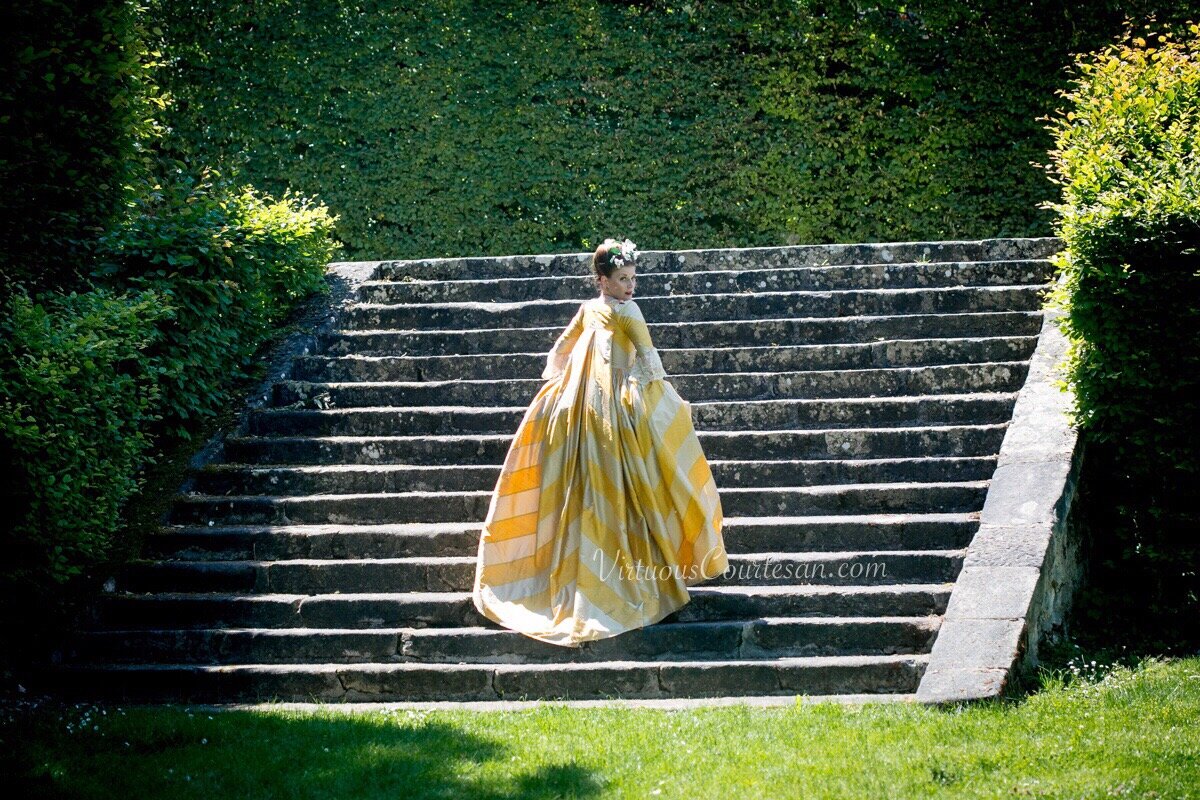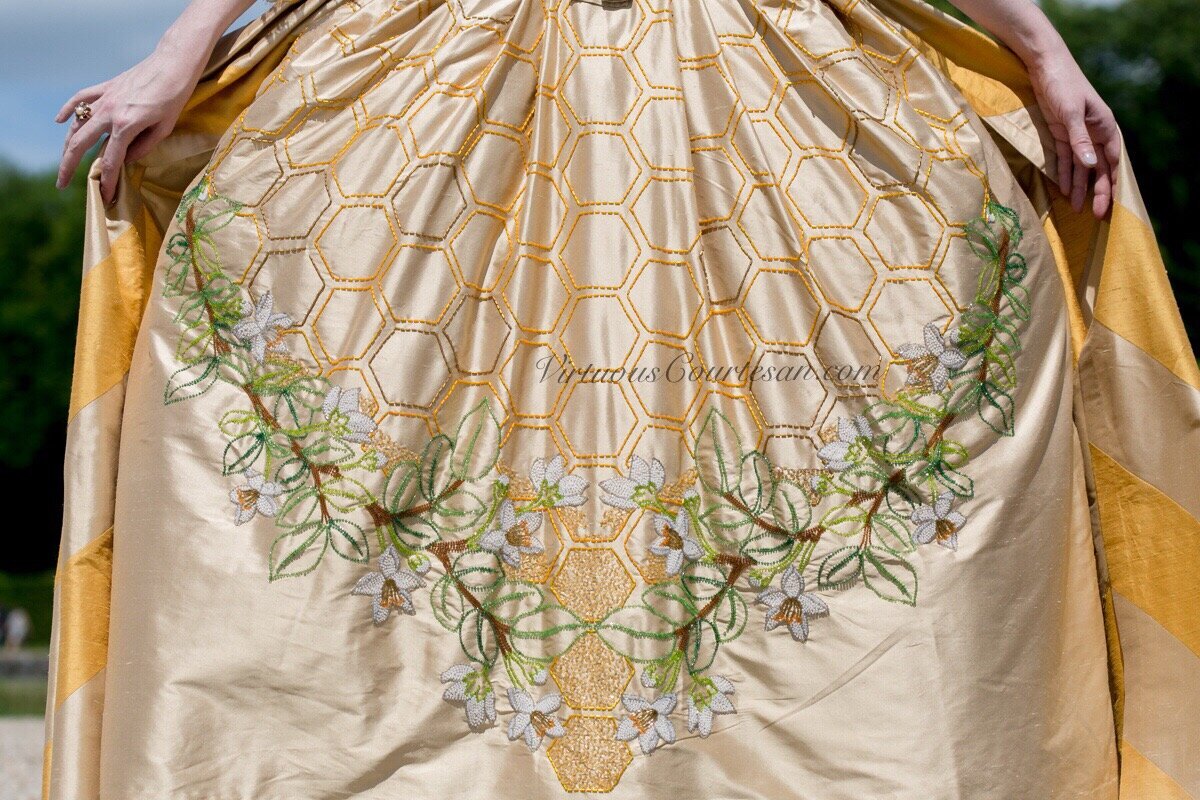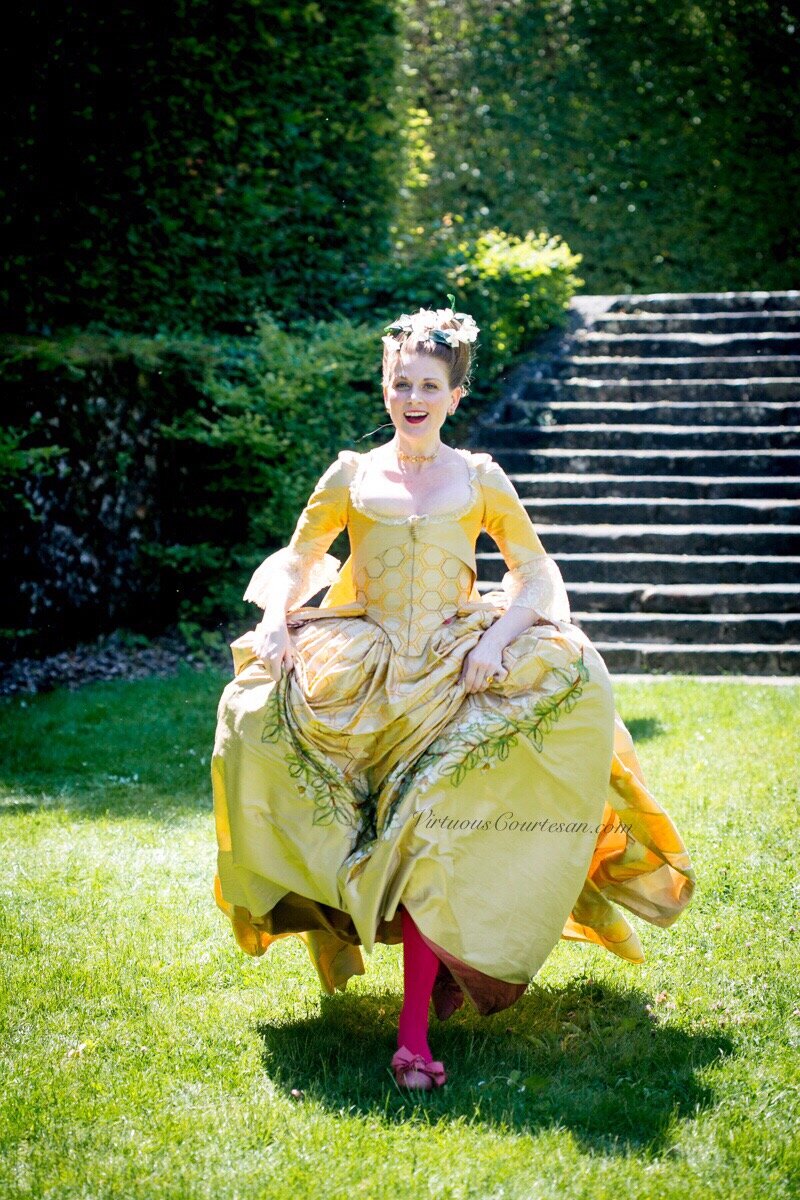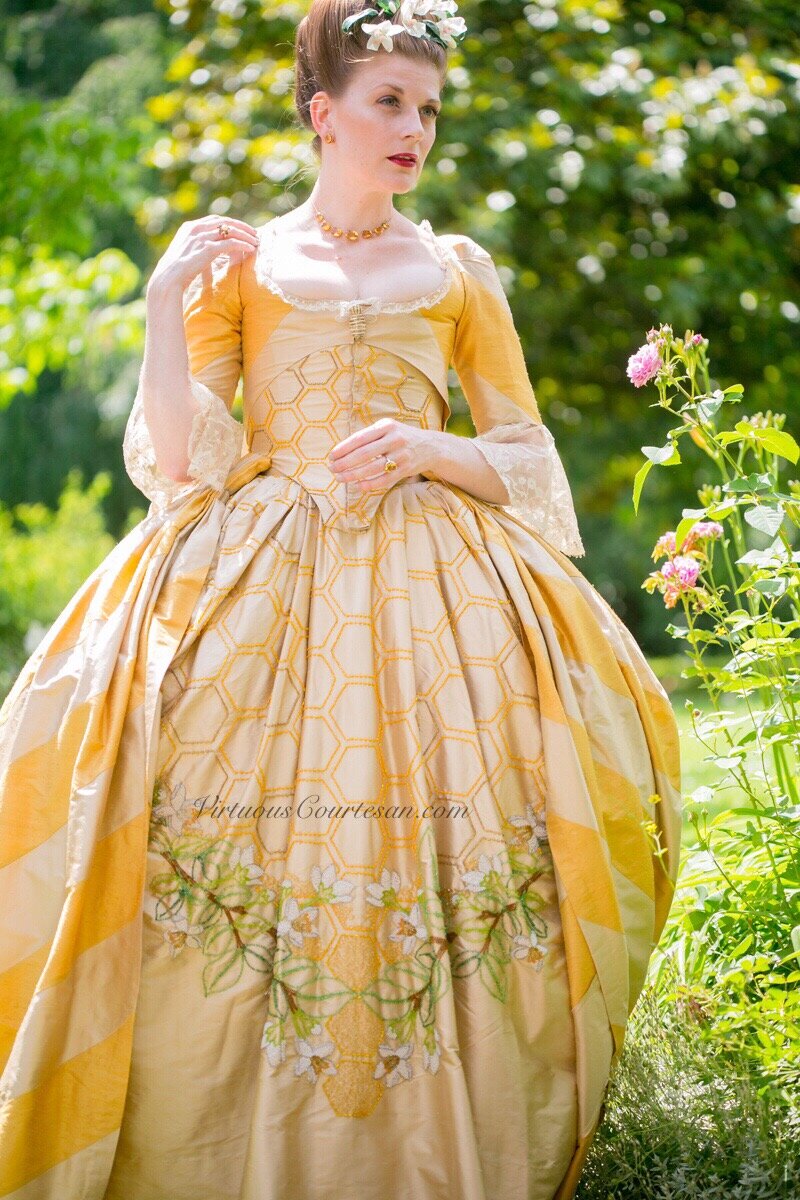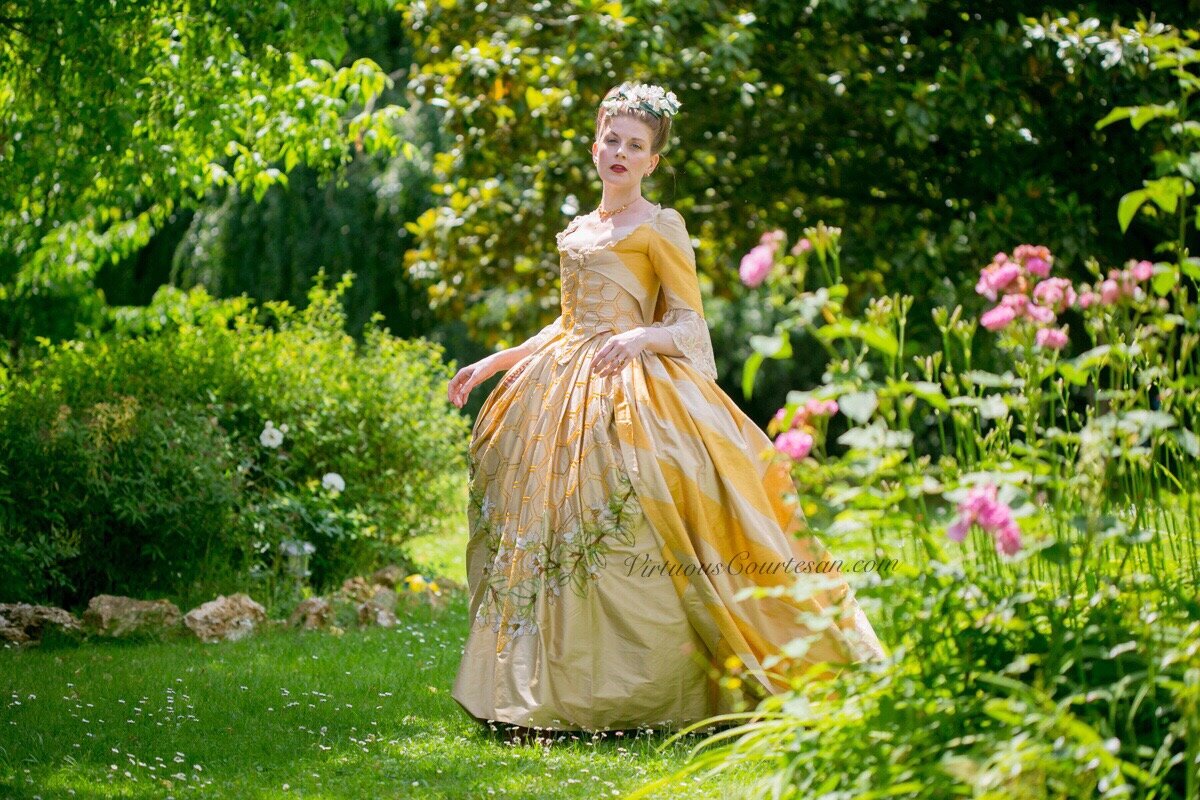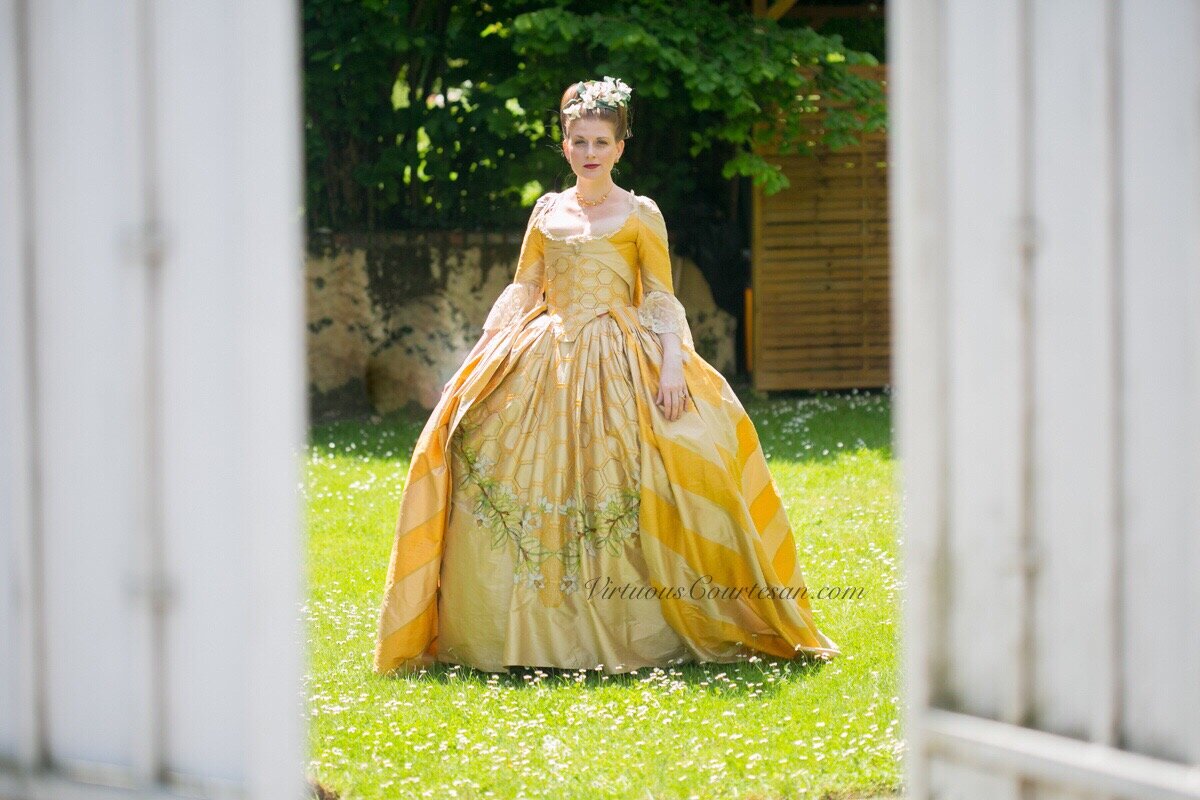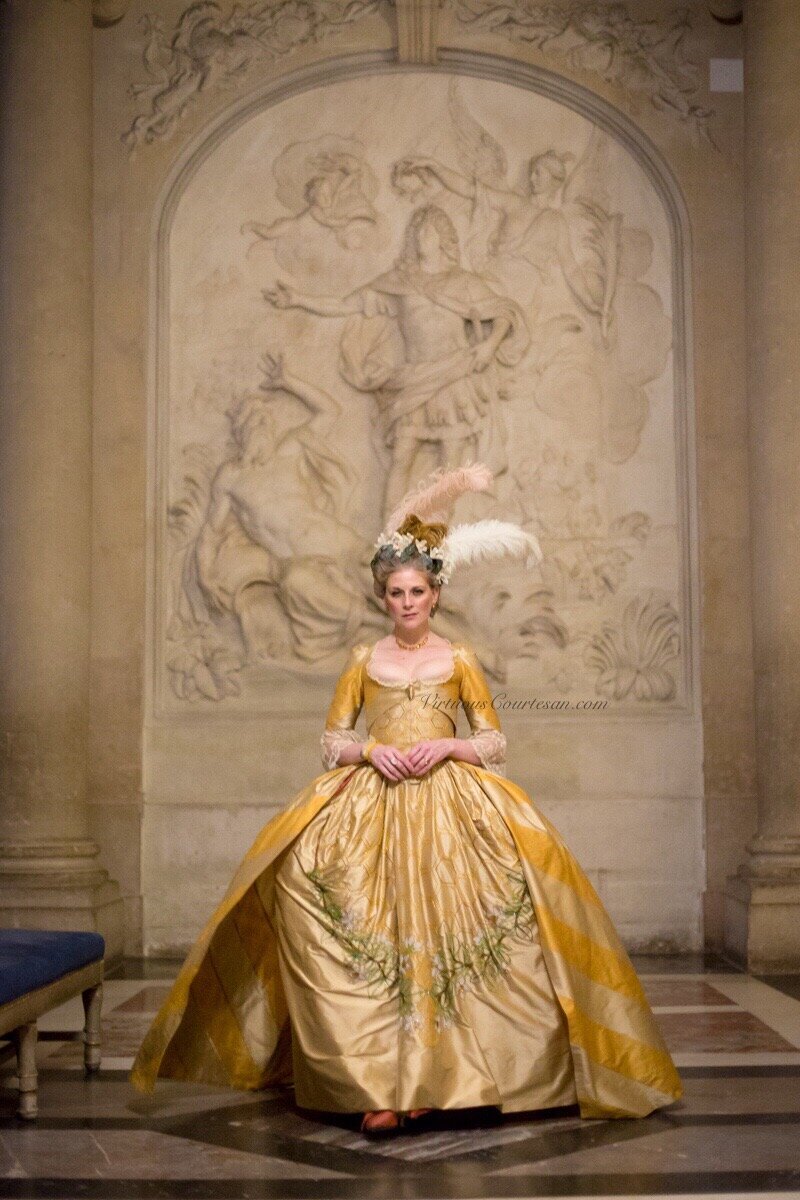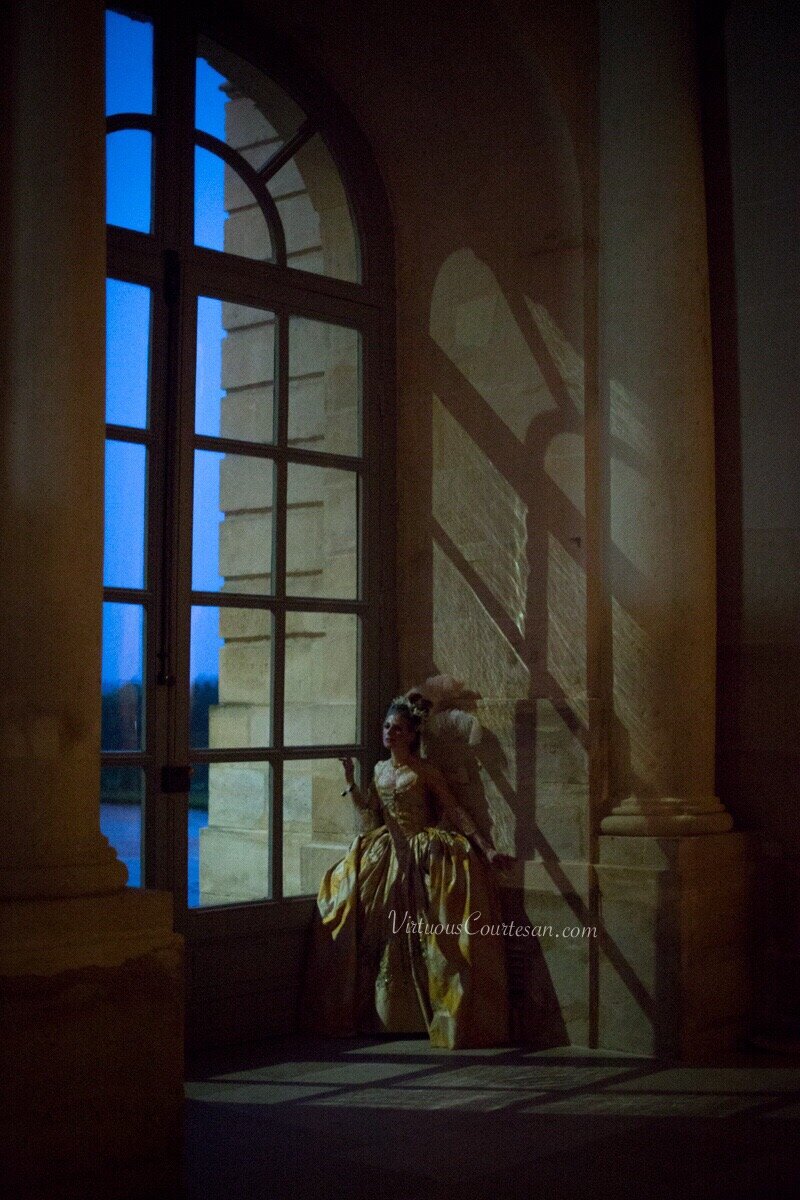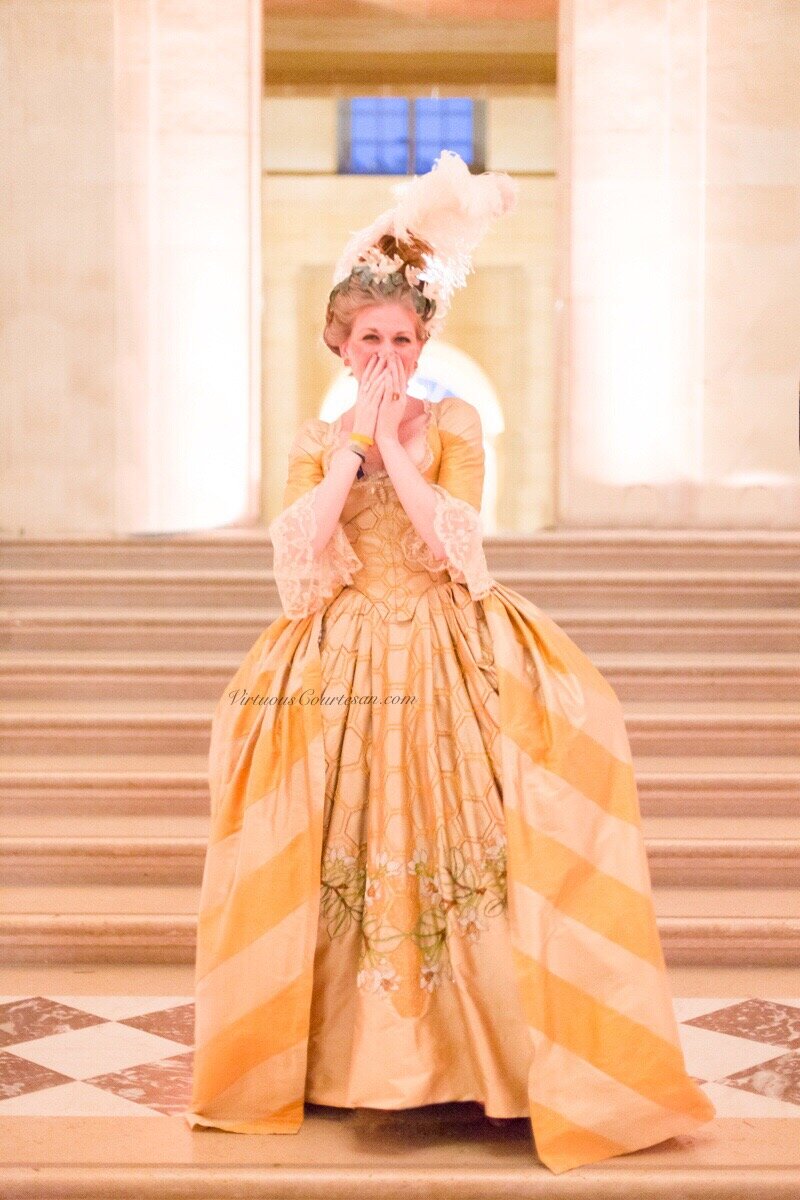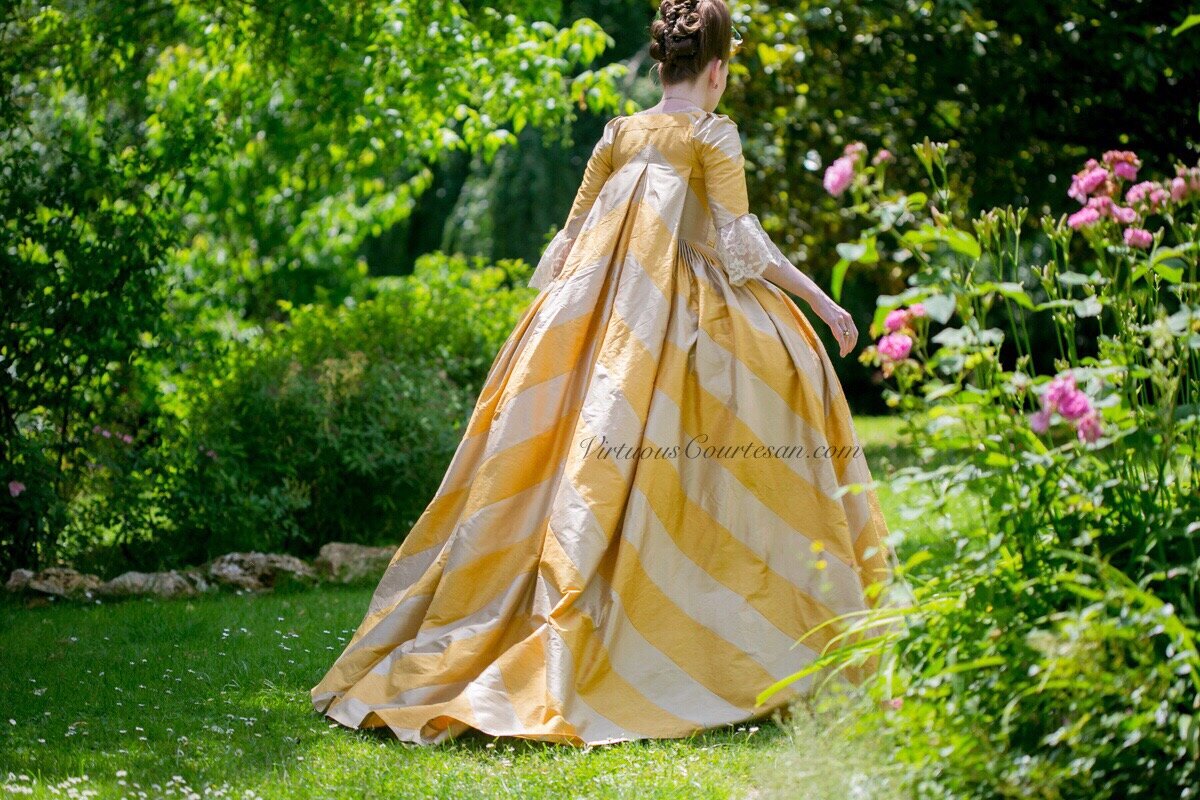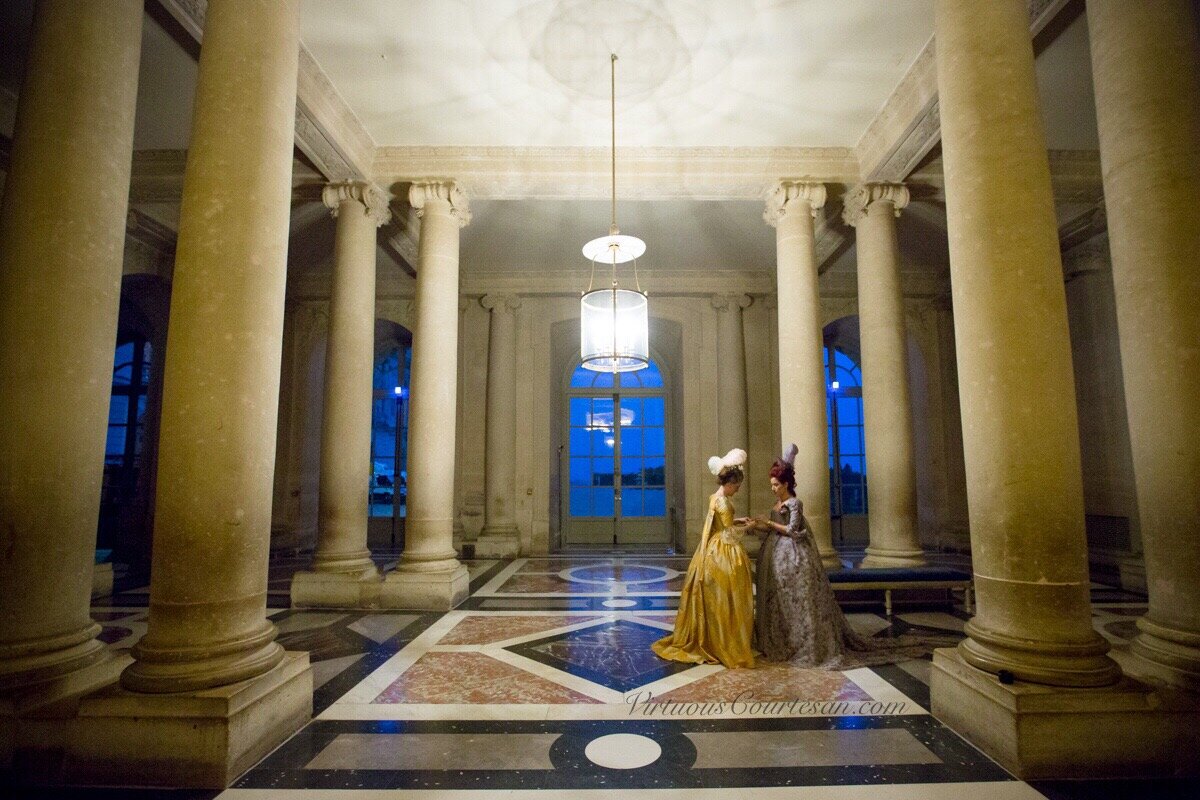18th century- HoneyBee inspired gown
Style
I have avoided writing about the concept and creation of this dress for over 18 months. My avoidance comes from my inability to find words for the massive amount of work, process, risk and - ultimately- jubilation that when into this dress. In this regard- I hope the photos speak better than my own words can.
Conceptually I wanted to build a gown that was a celebration of my own Floridian upbringing and the beauty Versailles. Unexpectedly- my own upbringing came to the forefront during the construction as during this time I lost my father after a long battle with Parkinson’s disease. Although he never lived to see the final work- I thought of him constantly as I worked on it and credit the meditative process of embroidery with helping me get through his death. Louis XIV had an affinity for oranges and in addition to the building of the Orangerie had potted versions located throughout the palace. Honey Bees and orange blossoms go hand in hand (and sisters name just happens to mean honeybee :) . Bees are often seen as a symbol of nobility (although in the case of France are more often seen in post revolution France)
Construction
The overgown is constructed of meticulously cut bias strips of a highly golden yellow slubbed silk dupioni and a dark champagne smoother silk shantung. Cutting these strips required the ultimate care as had they been off by even 1/16” the chevrons of the gown would not have lined up. The bias strips are used to form a chevron at side seam and center back. Additionally they also line up to the inside the draped panels at both the center and sides. To achieve this I (nervously) draped it on the stand. The side panels of the overgown are sewn in cartridge pleats and the center front is a faux “zone front.” Cartridge pleats are not historically accurate to the 18th century- I just happen to really like them. Sleeve panels are sewn in and also match the Chevron at the front and back of the arms-eye. For the center Front closure of the gown I made a 3 dimensional oversize goldwork bee. The wings of the bee are made with true silk lame.
The process of hand tambour beading the skirt started 9 months before the actual event with a class in tambour beading. The art, which is most often seen in 1920’s beaded dresses, is one that I had been wanting to learn for years. Following my class- I refined my technique by beading a silk chiffon 20s dress. Only then - was I able to start the beading on this skirt panel. All in all the beading took about 6 months and hundreds of hours of work. The beads are a mixture of vintage and modern; hex cut and rocailles most of which are size 11 or 12. The orange blossoms have 3 dimension stamens with slightly raised pollen ends.
Accessories
The flowers in my hair are made by me out of pure beeswax, crepe paper, wire, crinoline and cotton thread. These were inspired by the beeswax flowers of the Victorian era.
My jewelry is an original Victorian citrine set; a generous gift from a most supportive family member. (the earrings were converted mid-century). That pesky yellow ribbon on my wrist was intended to hide the pesky synthetic wrist-let required to be worn by attendees of the ball.
The lace in the cuffs and neckline of the gown is rare antique handmade Carrickmacross lace likely from the Edwardian era. The lace was not cut and is very gently hand applied as was found before wearing and removed at the end of the night.
Photos by Phillip VanNostrand; Taken in Versailles and at Vaux Vicompte

